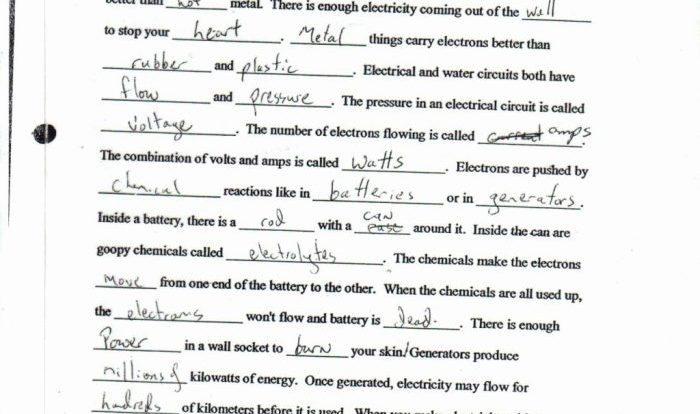Brainpop parts of a plant – Embark on a captivating journey into the world of plants with BrainPOP’s comprehensive guide to their essential parts. Join us as we explore the functions and adaptations of each component, unraveling the secrets of plant life and its remarkable diversity.
From the towering trees that grace our landscapes to the delicate wildflowers that bloom in abundance, plants play a vital role in sustaining life on Earth. Understanding their intricate structures and processes is crucial for appreciating the natural world and its incredible complexity.
Introduction
Understanding the different parts of a plant is essential for comprehending how plants function and survive. Each part plays a specific role in the plant’s overall growth, development, and reproduction.
BrainPOP is an excellent resource for learning about plant parts. Its engaging videos, interactive activities, and quizzes make the learning process fun and effective.
Importance of Plant Parts
- Roots:Absorb water and nutrients from the soil, anchor the plant in the ground, and store food.
- Stem:Supports the plant, transports water and nutrients, and produces leaves and flowers.
- Leaves:Capture sunlight for photosynthesis, exchange gases, and store food.
- Flowers:Produce seeds for reproduction.
- Fruits:Protect and disperse seeds.
Major Plant Parts
Plants are made up of different parts that work together to help the plant survive and grow. These parts can be divided into two main categories: the root system and the shoot system.
The root system is made up of the roots, which anchor the plant in the ground and absorb water and nutrients from the soil. The shoot system is made up of the stems, leaves, flowers, and fruits. The stems transport water and nutrients from the roots to the leaves, where photosynthesis takes place.
BrainPOP’s videos on plant parts are a great resource for learning about the different parts of a plant. But did you know that the name “John” is shared by 8 popes? Click here to learn more about the popes named John.
After that, come back to BrainPOP and continue learning about the fascinating world of plants!
The leaves are the site of photosynthesis, where the plant uses sunlight to convert carbon dioxide and water into glucose and oxygen. The flowers are the reproductive organs of the plant, and the fruits contain the seeds.
Roots
Roots are the underground part of the plant that anchor it in the ground and absorb water and nutrients from the soil. There are two main types of roots: taproots and fibrous roots.
- Taproots are long, thick roots that grow straight down into the ground. They are found in plants such as carrots, beets, and radishes.
- Fibrous roots are thin, branching roots that spread out near the surface of the soil. They are found in plants such as grasses, corn, and wheat.
Stems
Stems are the above-ground part of the plant that transport water and nutrients from the roots to the leaves. They also support the leaves and flowers.
- Stems can be woody or herbaceous. Woody stems are hard and rigid, while herbaceous stems are soft and flexible.
- Stems can be branched or unbranched. Branched stems have branches that grow out from the main stem, while unbranched stems do not.
Leaves
Leaves are the site of photosynthesis, where the plant uses sunlight to convert carbon dioxide and water into glucose and oxygen. Leaves are typically green, but they can also be other colors, such as red, yellow, or purple.
- Leaves can be simple or compound. Simple leaves have a single blade, while compound leaves have multiple blades.
- Leaves can be arranged in a variety of ways on the stem. The most common arrangement is alternate, where the leaves are arranged one at a time on opposite sides of the stem.
Flowers, Brainpop parts of a plant
Flowers are the reproductive organs of the plant. They contain the stamens, which produce pollen, and the pistil, which produces ovules. When pollen from the stamens fertilizes an ovule in the pistil, a seed is produced.
- Flowers can be perfect or imperfect. Perfect flowers have both stamens and pistils, while imperfect flowers have only one or the other.
- Flowers can be pollinated by wind, insects, or birds.
Fruits
Fruits are the ripened ovaries of flowers. They contain the seeds of the plant. Fruits can be fleshy, such as apples and oranges, or dry, such as beans and nuts.
- Fruits are an important source of food for animals and humans.
- Fruits can be used to make a variety of products, such as jams, jellies, and juices.
Plant Structures

Plants possess an array of specialized structures, each fulfilling distinct functions essential for their survival and growth. These structures include leaves, stems, and roots, which exhibit remarkable adaptations to their specific roles.
Leaves
Leaves are the primary photosynthetic organs of plants, responsible for capturing sunlight and converting it into energy through the process of photosynthesis. Their broad, flattened shape maximizes surface area for efficient light absorption. Additionally, leaves contain chloroplasts, organelles that house chlorophyll, the green pigment that enables photosynthesis.
Stems
Stems provide structural support for plants, enabling them to stand upright and withstand environmental forces. They also facilitate the transport of water and nutrients from the roots to the leaves, and vice versa. Stems exhibit various adaptations, such as woody or herbaceous structures, to suit different plant species and environments.
Roots
Roots anchor plants firmly in the ground, absorbing water and nutrients from the soil. They consist of a complex network of root hairs, which increase the surface area for efficient absorption. Roots also play a role in storing food reserves and providing stability to the plant.
Plant Processes: Brainpop Parts Of A Plant
Plants engage in various vital processes that are crucial for their growth and survival. These processes include photosynthesis, transpiration, and nutrient absorption. In this section, we will delve into the significance of these processes and how they contribute to the overall well-being of plants.
Photosynthesis
Photosynthesis is a fundamental process in which plants utilize sunlight, carbon dioxide, and water to create glucose (sugar) and release oxygen. This process occurs within specialized organelles called chloroplasts, which contain the green pigment chlorophyll.
- Importance of Photosynthesis:
- Provides the plant with energy in the form of glucose.
- Releases oxygen as a byproduct, which is essential for life on Earth.
- Helps plants absorb and utilize nutrients from the soil.
Transpiration
Transpiration is the process by which water evaporates from the leaves of plants. This process creates a suction that draws water and nutrients up from the roots through the stem.
- Importance of Transpiration:
- Cools the plant by releasing water vapor into the atmosphere.
- Transports water and nutrients from the roots to the leaves.
- Helps regulate the plant’s water balance.
Nutrient Absorption
Plants absorb nutrients from the soil through their roots. These nutrients are essential for plant growth and development.
- Importance of Nutrient Absorption:
- Provides the plant with the building blocks it needs to grow and reproduce.
- Helps the plant resist pests and diseases.
- Improves the plant’s overall health and appearance.
Plant Adaptations
Plants have remarkable abilities to adapt to diverse environments, from scorching deserts to frigid polar regions. These adaptations enable them to thrive in specific ecological niches and ensure their survival and reproductive success.
Examples of Plant Adaptations
- Drought Tolerance:Cacti and succulents store water in thick, fleshy stems and leaves, reducing water loss through transpiration.
- Cold Resistance:Alpine plants have a compact growth form and hairy leaves that insulate them against cold temperatures.
- Epiphytism:Orchids and bromeliads grow on trees or other plants, using their host’s structure for support and accessing nutrients from the air and rainwater.
- Fire Resistance:Eucalyptus trees have thick bark that protects them from bushfires, while some plants produce flammable oils that aid in seed dispersal.
- Pollination Adaptations:Flowers attract pollinators with bright colors, sweet scents, or nectar rewards.
Role of Plant Adaptations
Plant adaptations play a crucial role in their survival and reproduction. They:
- Enhance Survival:Adaptations allow plants to withstand extreme conditions, such as drought, cold, or nutrient deficiency.
- Increase Reproductive Success:Adaptations facilitate pollination and seed dispersal, ensuring the continuation of the species.
- Maintain Ecological Balance:Plants with specific adaptations contribute to the diversity and stability of ecosystems.
Plant Diversity
The plant kingdom is incredibly diverse, with an estimated 390,000 to 422,000 species on Earth. This vast array of plants plays a crucial role in the Earth’s ecosystems, providing food, shelter, and oxygen for countless organisms.
Several factors contribute to plant diversity, including:
Geographic Isolation
- Physical barriers, such as mountains and oceans, can isolate plant populations and lead to the evolution of distinct species.
- Different environmental conditions in isolated areas can drive natural selection, favoring traits that enhance survival in those specific conditions.
Climate
- Climate factors, such as temperature, precipitation, and sunlight, influence plant growth and distribution.
- Plants have adapted to a wide range of climatic conditions, resulting in the development of diverse species specialized for specific environments.
Evolutionary History
- Plants have evolved over millions of years, undergoing genetic changes that have led to the development of new species.
- The fossil record provides evidence of the evolution of plant life from simple algae to complex flowering plants.
Hybridization
- Hybridization, the cross-breeding of different plant species, can result in the creation of new species with unique traits.
- Natural hybridization occurs when different species overlap in their distribution, while artificial hybridization is used in agriculture to create new plant varieties.
Key Questions Answered
What is the significance of understanding plant parts?
Comprehending plant parts enables us to appreciate their vital role in the ecosystem, from providing food and shelter to producing oxygen and absorbing carbon dioxide.
How does BrainPOP contribute to teaching about plant parts?
BrainPOP’s engaging videos, interactive simulations, and quizzes make learning about plant parts fun and accessible for students of all ages.


